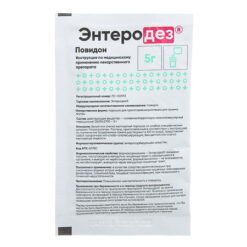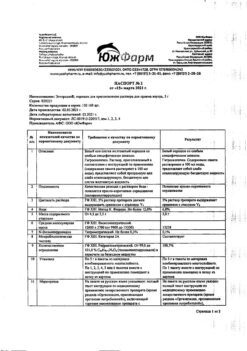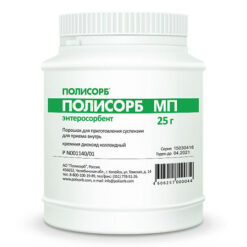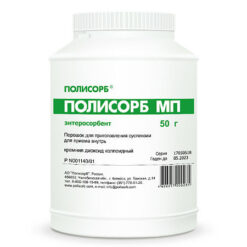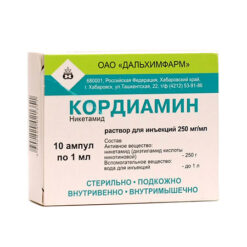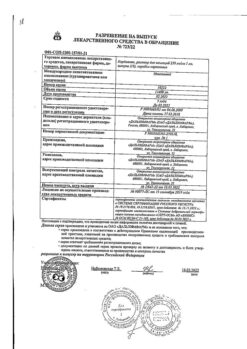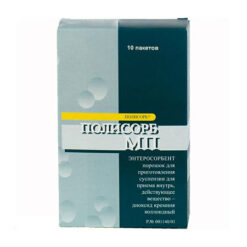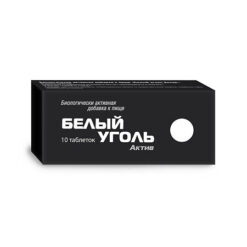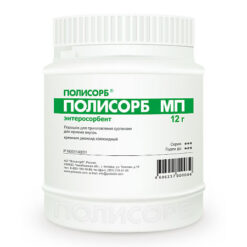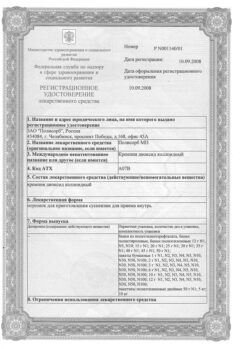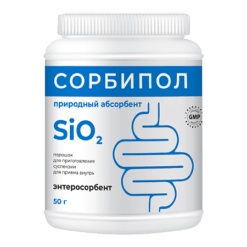No products in the cart.
Bridan, 100 mg/ml 2 ml 10 pcs
€1.00
Out of stock
(E-mail when Stock is available)
Description
Brydan is a selective myorelaxant antidote. Sugammadex is a modified gamma-cyclodextrin, which is a drug that selectively binds muscle relaxants. It forms a complex with myorelaxants rocuronium bromide and vecuronium bromide in blood plasma, as a result the number of myorelaxant molecules binding to n-cholinoreceptors in neuromuscular junction decreases. This leads to elimination of neuromuscular blockade caused by rocuronium bromide and vecuronium bromide.
We observed a clear dependence of the effect on the dose of sugammadex, which was administered at different periods of time and at different depths of neuromuscular conduction blockade. Sugammadex was administered in doses from 0.5 to 16 mg/kg both after a single injection of 0.6, 0.9, 1, and 1.2 mg/kg of rocuronium bromide, or after administration of 0.1 mg/kg of vecuronium bromide, or after administration of maintenance doses of these muscle relaxants.
Sugammadex can be used at various times after administration of rocuronium bromide or vecuronium bromide.
Pharmacokinetics
The pharmacokinetic parameters of sugammadex are calculated based on the summation of concentrations of free sugammadex and sugammadex in the sugammadex-myorelaxant complex. Pharmacokinetic parameters such as clearance and Vd are considered the same for sugammadex outside the complex and sugammadex as part of the complex with the myorelaxant.
In bolus administration of sugammadex at doses from 1 to 16 mg/kg, its pharmacokinetics are linear.
Pharmacokinetic parameters of sugammadex after IV administration to adult patients: fast distribution phase with half-life of 2.9 min; slow distribution phase with half-life of 27 min; Vss – 11-14 L, clearance – 88 ml/min.
Distribution
After intravenous administration of sugammadex in adult patients, the fast phase of distribution with a half-distribution period of 2.9 minutes; slow phase of distribution with half-life of 27 minutes; T1/2 – 1.8 h, Vss – 11-14 L, clearance – 88 ml/min. Neither sugammadex nor sugammadex-rocuronium complex binds to plasma proteins or erythrocytes.
Metabolism
To date, no metabolites of sugammadex have been detected.
Excretion
Sugammadex is excreted unchanged by the kidneys. T1/2 sugammadex is 1.8 h, plasma clearance is 88 ml/min.
More than 90% of the dose is excreted within 24 hours. 96% of the dose is excreted in the urine, of which 95% is unchanged sugammadex. Less than 0.02% of sugammadex is excreted in the feces and exhaled air.
Pharmacokinetics in special clinical cases
Patients of advanced age with impaired renal function
Pharmacokinetics in special clinical cases
Patients of advanced age with impaired renal function Pharmacokinetic parameters in elderly patients (Table 1) with varying degrees of impaired renal function, as measured by CK value, were evaluated using a population-based pharmacokinetic analysis.
Table 1. Pharmacokinetic parameters of sugammadex in elderly patients (body weight 75 kg) with impaired renal function.
| Pharmacokinetic parameters | Norm CK 80 ml/min | Mild renal impairment CK 50 ml/min | Moderate renal impairment CK 30 ml/min | |
| T1/2 (h) | 2.4 | 2.6 | 6.1 | |
| Vss (l) | 13.5 | 13.2 | 11.4 | |
| Clearance (ml/min) | 80 | 72 | 28 |
In children and adolescents under 18 years of age, Vss and clearance increase with age. The variability of sugammadex plasma concentrations in children is comparable to that in adults.
Table 2. Pharmacokinetic parameters in two typical pediatric patients.
| Pharmacokinetic parameters | Child (age 8 years) | Adolescent (age 15) |
| T1/2 (h) | 0.9 | 1.7 |
| Vss (l) | 3.1 | 9.1 |
| Clearance (ml/min) | 41 | 71 |
.
There were no clinically significant differences in pharmacokinetic parameters as a function of sex, race, or body weight.
Indications
Indications
Active ingredient
Active ingredient
Composition
Composition
1 ml of solution for intravenous injection contains:
active ingredient:
sugammadex 100 mg,
excipients:
hydrochloric acid and/or sodium hydroxide,
water for injection
How to take, the dosage
How to take, the dosage
Bridan is administered only by or under the direction of the anesthesiologist. Appropriate monitoring is recommended to monitor the degree of neuromuscular blockade and recovery of neuromuscular conduction.
It is generally accepted practice to also monitor neuromuscular conduction in the postoperative period to detect adverse events, including recurrence of blockade. If drugs are administered parenterally within 6 h after sugammadex administration that may lead to displacement interaction with sugammadex, neuromuscular conduction should be monitored to detect signs of re-blockade.
The recommended dose of sugammadex depends on the degree of neuromuscular blockade to be resolved.
The recommended dose is independent of the type of anesthesia.
Adults
Braydan is used to relieve neuromuscular conduction blockages of varying depth caused by rocuronium bromide or vecuronium bromide.
The elimination of neuromuscular blockade in standard clinical situations (residual neuromuscular conduction blockade)
Bridan at a dose of 4 mg/kg is recommended when recovery of neuromuscular conduction has reached 1-2 posttetanic contractions (in posttetanic count mode, PTC) after blockade induced by rocuronium bromide or vecuronium bromide. The average time to complete recovery of neuromuscular conduction (T4/T1 ratio to 0.9) is approximately 3 minutes.
Braydan at a dose of 2 mg/kg is recommended when spontaneous recovery of neuromuscular conduction after blockade induced by rocuronium bromide or vecuronium bromide has achieved at least 2 responses in a four-digit stimulation (TOF) mode. The average time to recovery of the T4/T1 ratio to 0.9 is about 2 min.
When sugammadex is used in the recommended doses to restore neuromuscular conduction in standard clinical situations, a faster recovery of T4/T1 ratio to 0.9 occurs when neuromuscular blockade is induced by rocuronium bromide compared to vecuronium bromide.
Emergency management of rocuronium bromide-induced neuromuscular blockade
When immediate restoration of neuromuscular conduction is necessary in rocuronium bromide-induced blockade, the recommended dose of sugammadex is 16 mg/kg.
When sugammadex is administered at a dose of 16.0 mg/kg 3 min after a bolus dose of 1.2 mg/kg of rocuronium bromide, the average time to restore the T4/T1 ratio to 0.9 is about 1.5 min.
Retime administration of sugammadex
In exceptional postoperative recurarization situations, after a sugammadex dose of 2 mg/kg or 4 mg/kg, the recommended repeated dose of sugammadex is 4 mg/kg. After the repeated dose of sugammadex, neuromuscular conduction should be monitored until neuromuscular function is fully restored.
Recuronium bromide or vecuronium bromide after sugammadex
24 hours later.
The use of the drug in special patient groups
In patients with mild to moderate renal dysfunction (CK 30-80 ml/min), the drug should be used in the doses recommended for adult patients without renal pathology.
The use of sugammadex is not recommended in patients with severe renal impairment, including patients on program hemodialysis.
After sugammadex administration with 2 responses in TOF stimulation mode against blockade induced by rocuronium bromide, total time of neuromuscular conduction recovery (T4/T1 ratio up to 0.9) in adult patients (18-64 years) averages 2.2 min, in elderly patients (65-74 years) 2.6 min, in senile patients (75 years and older) 3.6 min. Although the recovery time of neuromuscular conduction is slightly longer in elderly patients, it is recommended to use sugammadex in doses intended for adult patients of the middle age group.
In obese patients, the dose of sugammadex should be calculated based on the actual body weight. In this category of patients, the drug is recommended to be used in doses intended for adult patients.
In patients with hepatic dysfunction, the recommended doses of the drug remain the same as in adult patients because sugammadex is mainly excreted by the kidneys. Due to insufficient data on the use of sugammadex in patients with severe hepatic impairment, Brydan should be used with extreme caution in these conditions.
In children
The data on the use of sugammadex in children are limited. It is possible to administer the drug to relieve neuromuscular blockade caused by rocuronium bromide when 2 responses in the TOF stimulation mode appear.
To relieve rocuronium bromide-induced neuromuscular blockade in routine practice in children and adolescents aged 2 to 17 years, sugammadex at a dose of 2 mg/kg is recommended (with 2 responses in the TOF stimulation mode).
Other situations of neuromuscular conduction recovery encountered in standard practice have not been studied, so in these cases sugammadex is not recommended until further data are available.
The emergency restoration of neuromuscular conduction when administered with sugammadex in children from 2 years of age and adolescents has not been studied, and therefore the use of the drug is not recommended in these situations until further data are available.
The drug can be diluted to improve dosing accuracy in children.
The rules for use of the drug
Bridan is administered intravenously as a single bolus injection within 10 seconds directly into a vein or intravenous infusion system.
If sugammadex is administered via a single infusion system with other medications, the system should be flushed thoroughly (e.g., with 0.9% sodium chloride solution) between the administration of Bridan and medications that are incompatible with it and if compatibility has not been established.
Sugammadex may be administered in the same intravenous infusion system along with the following infusion solutions: 0.9% (9 mg/ml) sodium chloride solution; 5% (50 mg/ml) glucose solution; 0.45% (4.5 mg/mL) sodium chloride solution with 2.5% (25 mg/mL) glucose solution; Ringer’s solution with lactic acid; Ringer’s solution; 5% (50 mg/mL) glucose solution in 0.9% (9 mg/mL) sodium chloride solution.
For use in children, Bridan may be diluted with 0.9% (9 mg/ml) sodium chloride solution to a concentration of 10 mg/ml.
Interaction
Interaction
Binding interaction
When administering sugammadex, the effectiveness of some drugs may decrease due to a decrease in their plasma (free) concentration. In this situation, either the drug should be reintroduced, or a therapeutically equivalent drug (preferably of a different chemical class) should be administered.
Displacement interaction
When some drugs are administered after sugammadex, theoretically rocuronium and vecuronium can be displaced from the sugammadex complex, resulting in a possible resumption of neuromuscular blockade. In such cases, the use of EVI should be started again.
The infusion of the drug that caused displacement of rocuronium or vecuronium from the sugammadex complex should be stopped. If displacement interaction is suspected after parenteral administration of another drug (which was done within 6 h after sugammadex administration), neuromuscular conduction levels should be continuously monitored for signs of re-blockade development.
A displacement interaction is possible after administration of the following drugs: toremifene, flucloxacillin and fusidic acid.
Clinically significant pharmacodynamic interactions with other drugs can be expected:
– for toremifene, flucloxacillin, and fusidic acid, a displacement interaction is not excluded (no clinically significant binding interaction expected);
– for hormonal contraceptives, a binding interaction is not excluded (no clinically significant displacement interaction expected).
Interactions potentially affecting the efficacy of sugammadex
Toremifene, which has a relatively high binding constant and relatively high plasma concentrations, is able to displace vecuronium or rocuronium from the sugammadex complex to some extent. Therefore, recovery of the T4/T1 ratio to 0.9 may be delayed in patients who received toremifene on the day of surgery.
Injection of flucloxacillin at a high dose (infusion over 500 mg) may lead to some displacement of rocuronium or vecuronium from the sugammadex complex.
The use of flucloxacillin at high doses in the preoperative period may cause some delay in the recovery of the T4/T1 ratio to 0.9. The administration of high doses of flucloxacillin in the postoperative period for 6 h should be avoided. If flucloxacillin should be administered during this period, neuromuscular conduction and respiration should be closely monitored, particularly during the first 15 min after administration of this drug.
Interactions potentially affecting the effectiveness of other drugs
The interaction between sugammadex at a dose of 4 mg/kg and progesterone may result in decreased progestogen exposure (34% AUC), which is similar to the situation observed when a daily dose of oral contraceptive is missed. Therefore, the administration of a bolus dose of sugammadex is considered equivalent to one missed daily dose of steroidal oral contraceptives (combined or containing only progestagen).
If an oral contraceptive was taken on the day sugammadex was administered, refer to the section in the oral contraceptive instructions describing what to do if a dose is missed.
If a hormonal contraceptive with a route of administration other than oral contraception is used, the patient should use an additional non-hormonal contraceptive method within the next 7 days and refer to the instructions for use of that contraceptive.
Influence on laboratory parameters
In general, sugammadex has no effect on laboratory tests, with the possible exception of the serum progesterone quantification test.
Pharmaceutical Incompatibilities
Sugammadex should not be mixed with other drugs and solutions except for those intended to dilute it.
Sugammadex is physically incompatible with verapamil, ondansetron and ranitidine.
Special Instructions
Special Instructions
VRT should be performed until adequate independent breathing is fully restored after the neuromuscular block has been resolved. Even if neuromuscular conduction is fully restored, other medications that have been used in the peri- and postoperative periods may depress respiratory function and therefore prolonged ventilatory ventilation may be necessary.
If neuromuscular block reoccurs after extubation, adequate ventilation must be provided in time.
The reoccurrence of neuromuscular block has mainly been observed in cases where the drug was administered in suboptimal (insufficient) doses. In order to prevent recurrence of neuromuscular blockade, the drug should not be used in doses lower than recommended.
Recuronium bromide or vecuronium bromide can be administered 24 hours after sugammadex.
If a neuromuscular blockade is necessary before this time (24 h), non-steroidal muscle relaxants should be used.
In patients with severe renal dysfunction (CK < 30 ml/min) excretion of sugammadex and sugammadex-rocuronium complex is delayed, but in these patients there are no signs of neuromuscular blockade reoccurrence. The data obtained in a limited number of patients with impaired renal function and under hemodialysis program indicate unstable decrease of sugammadex plasma level due to hemodialysis. The use of sugammadex in patients with severe renal impairment is not recommended.
When using rocuronium bromide or vecuronium bromide, information from the instructions for medical use about drugs that potentiate neuromuscular blockade should be considered. If recurrence of neuromuscular blockade is observed, IV and reintroduction of sugammadex may be necessary.
When neuromuscular conduction was restored intentionally during anesthesia, signs of superficial anesthesia (movements, coughing, grimacing) have occasionally been observed.
If neuromuscular blockade is relieved during anesthesia, additional doses of anesthetics and/or opioid analgesics may be required.
Sugammadex is not metabolized in the liver; therefore, no studies have been conducted in patients with hepatic impairment. Special caution is required when using the drug in patients with severe hepatic impairment.
The use of sugammadex in patients receiving rocuronium bromide or vecuronium bromide in an OIT setting has not been studied.
Sugammadex is not used to relieve neuromuscular conduction blockade caused by myorelaxants such as suxamethonium or benzylisoquinoline-type compounds.
Sugammadex is not used to relieve neuromuscular block caused by other steroidal myorelaxants because there are no efficacy and safety data for this use. There are only limited data on elimination of pancuronium-induced neuromuscular conduction block, but their insufficient number does not allow recommending sugammadex for restoration of neuromuscular conduction when using this myorelaxant.
In conditions associated with prolonged circulation time of the active substance (cardiovascular disease, advanced age, renal and hepatic failure), the recovery time of neuromuscular conduction may be longer.
When administering the drug, there is a risk of allergic reactions, which may require emergency therapy.
When using the drug in patients on a diet with controlled sodium intake, note that 1 ml of the solution contains 9.7 mg of sodium. A sodium dose of 23 mg can be considered sodium-free. If more than 2.4 mL of the solution is to be administered, however, this should be considered in patients on a diet with limited sodium intake.
In studies, sugammadex, both with monotherapy and in combination with rocuronium bromide or vecuronium bromide, has not been found to cause QT interval prolongation.
In anesthesia, various combinations of drugs that can prolong the QTc interval (e.g., sevoflurane or propofol) are often administered. In such cases, normal precautions should be taken to prevent arrhythmias.
In in vitro experimental studies, a pharmacodynamic interaction (increase in the ATTB and prothrombin time) of sugammadex with vitamin K antagonists, unfractionated heparin, low molecular weight heparins, rivaroxaban and dabigatran was found. In studies on volunteers, the increase in these indicators was short-term (up to 30 minutes).
To date no clinically significant effect of sugammadex (as ionotherapy or in combination with these anticoagulants) on the incidence of peri- or postoperative bleeding was found.
In view of the short-term nature of the increase of BHR and prothrombin time caused by sugammadex (as monotherapy or in combination with the above coagulants), it is unlikely that sugammadex increases the risk of bleeding.
As there is currently no information on the use of sugammadex in patients with coagulopathies, coagulation parameters should be carefully monitored according to standard clinical practice in these cases.
After dilution of sugammadex with infusion solutions, the physical and chemical stability of the drug is maintained for 48 hours at 2° to 25°C. When opening the bottle containing sugammadex, the rules of asepsis should be strictly observed. Administration of the drug should be started without delay. If sugammadex is used delayed, it is the responsibility of the physician to observe the time and storage conditions prior to administration. If the dilution has been made under uncontrolled and unvalidated aseptic conditions, the storage time of the diluted solution should not exceed 24 h at 2° to 8°C. Any residues of the contents of infusion line vials after application of sugammadex should be destroyed in accordance with the regionally accepted requirements.
Impact on driving and operating machinery
After using the drug, potentially hazardous activities requiring high-speed psychomotor reactions, such as driving or operating machinery, should be avoided.
Contraindications
Contraindications
Side effects
Side effects
Allergic reactions: rare (â¥1/1000 to < 1/100) – hyperemia, erythematous rash. Allergic-like reactions have been observed in several persons after the use of sugammadex. As a rule, these cases regressed on their own and no additional therapy was required.
Anesthesia complications: frequent (⥠1/100 to (association with sugammadex administration was considered unlikely). 2% (frequency assessed by neuromuscular conduction monitoring) – recurrence of block after sugammadex administration at a suboptimal dose (less than 2 mg/kg).
Digestive system disorders: very common (⥠1/10 in volunteers) – dysgeusia (metallic or bitter taste) after sugammadex administration at a dose of 32 mg/kg or higher.
Respiratory system disorders: in patients with a history of lung complications there is a risk of bronchospasm.
Overdose
Overdose
To date, there has been one report of an accidental overdose of 40 mg/kg. There were no significant side effects.
Sugammadex is well tolerated in doses up to 96 mg/kg, and there are no dose-related or non-dose-related side effects.
The data obtained in a limited number of patients with impaired renal function and undergoing programmed hemodialysis indicate an unstable decrease in plasma levels of sugammadex due to hemodialysis.
Pregnancy use
Pregnancy use
The use of Bridan in pregnancy is contraindicated due to insufficient data.
It is not known whether sugammadex is excreted with breast milk in humans, but based on preclinical studies, the possibility is not excluded. Absorption of cyclodextrins by oral administration is low and has no effect on the infant after administration of a bolus dose of sugammadex to the nursing mother. However, Brydan should not be used in women during breastfeeding.
Braydan is contraindicated in children under 2 years of age.
Additional information
| Shelf life | 3 years |
|---|---|
| Conditions of storage | In a light-protected place, at 2-30 °C |
| Manufacturer | N.W. Organon, The Netherlands |
| Medication form | solution |
| Brand | N.W. Organon |
Related products
Buy Bridan, 100 mg/ml 2 ml 10 pcs with delivery to USA, UK, Europe and over 120 other countries.


